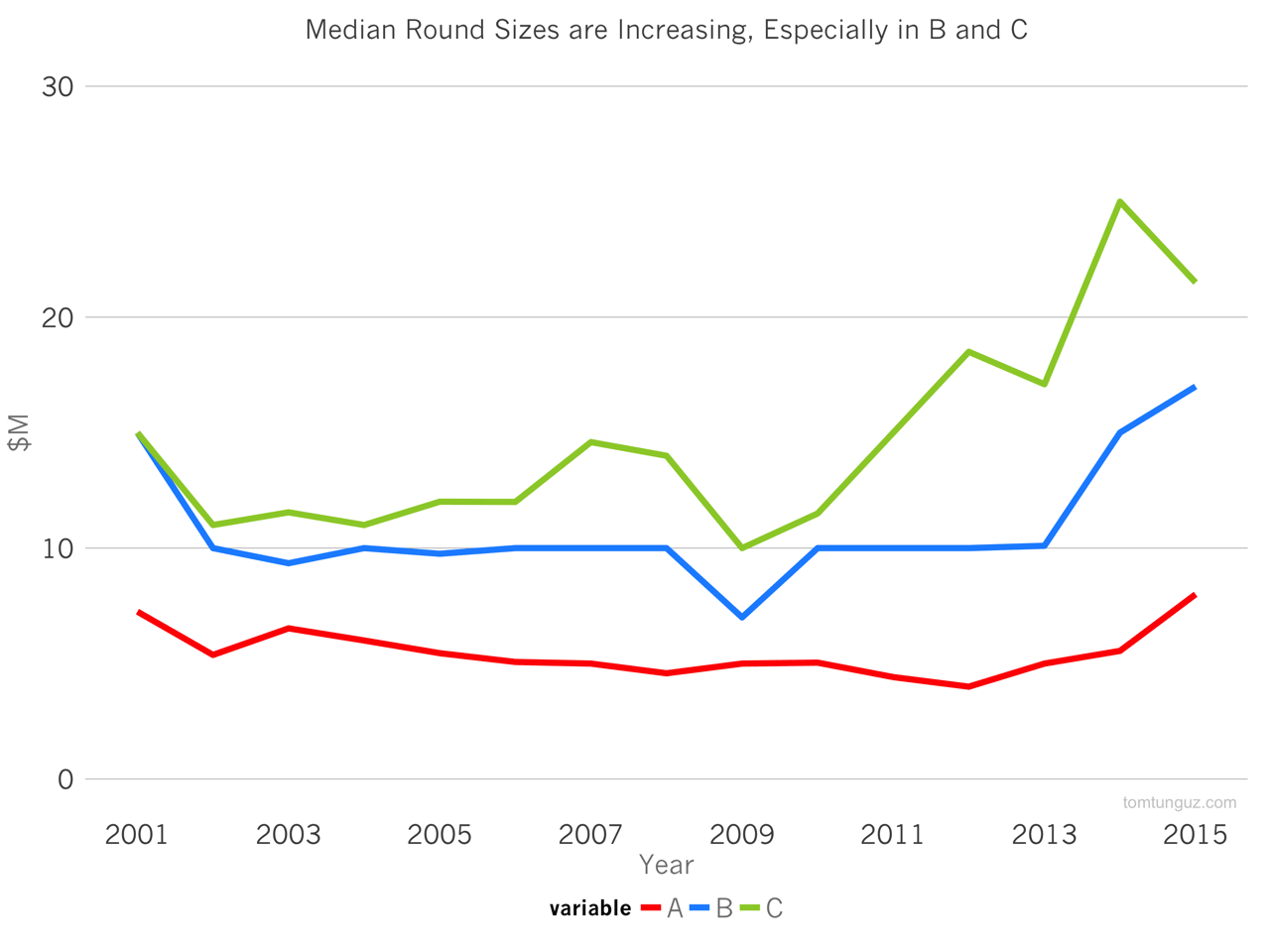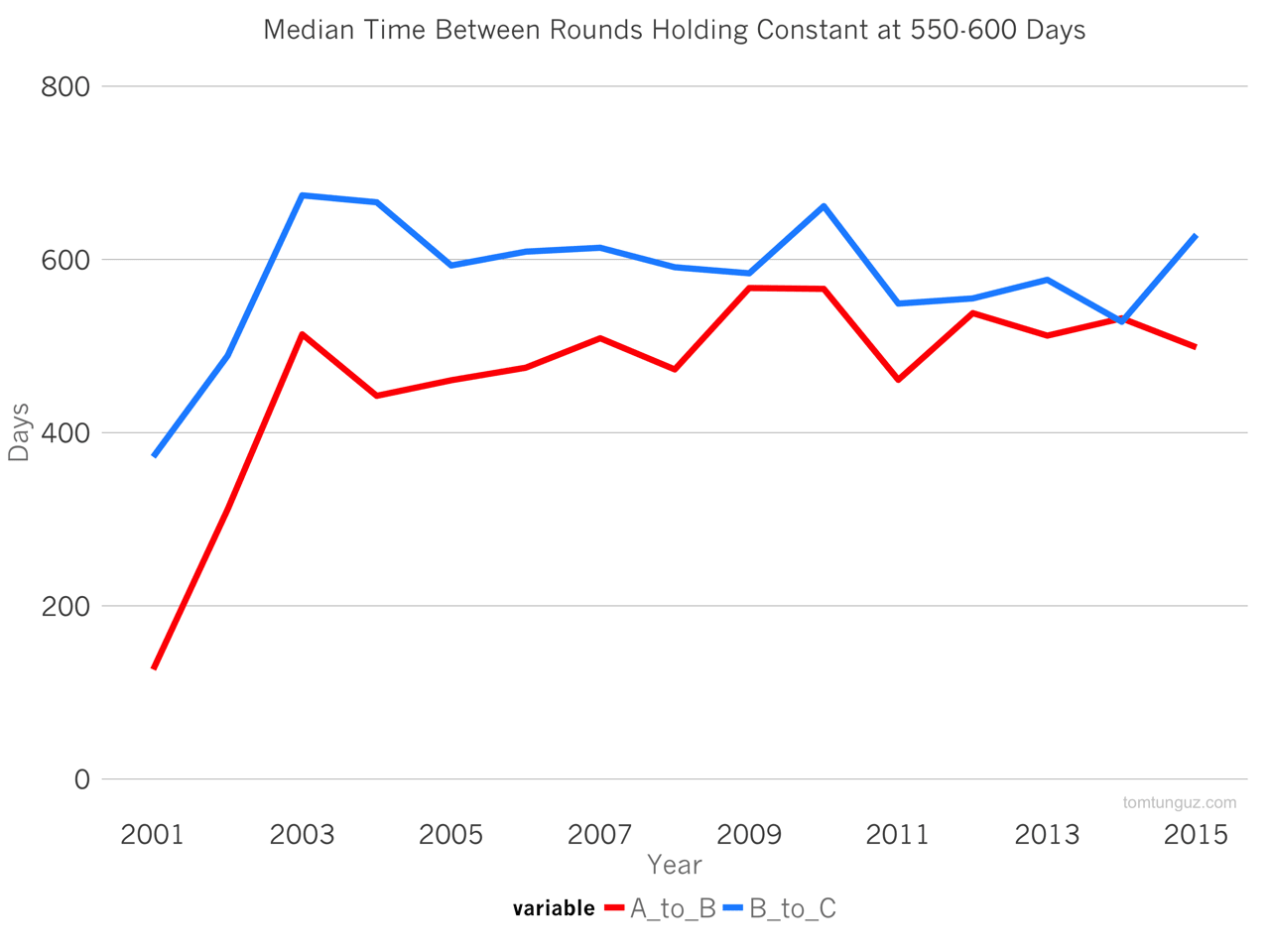The rate at which startups are raising follow-on rounds is decreasing, and has decreased steadily from 2003 through 2013. Between 2003 and 2006, post-Series A startups raised series Bs about 57% of the time. However from 2011-2014, that figure fell to 28%. The same trend is true in series C rounds, where success rates fell from 43% to 35%.



